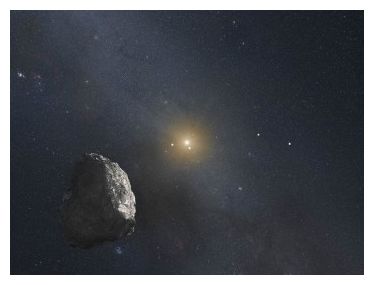
© The Monitor DailyArtist’s impression of a Kuiper Belt Object.
After
New Horizons probe's historic flyby of planet Pluto on July 14, 2015, NASA plans to get the tiny craft even further.
New Horizons is now slated to reach a tiny icy body in the Kuiper belt on New Year's Day, 2019, but
scientists believe that beyond that region a hidden planet may be lurking, the famous Planet X.
Scott Sheppard of the Carnegie Institution of Washington explained that the some of the rocky bodies in the Kuiper belt are large enough to be qualified as dwarf planets, but none of the known KBOs (Kuiper Belt Objects) is larger than Pluto.
Yet, there's a chance that scientists missed out something since there are clues that a tenth planet may be lurking in our galaxy's outer reaches. Planet X may be larger than Pluto and our planet. Sheppard thinks that it may be as big as Neptune.
"I think there are definitely things out there bigger than Pluto that are yet to be discovered," he added.
Sheppard and a fellow researcher disclosed the theory in the journal
Nature last year. According to the document, there may be a "massive perturber" located beyond the Kuiper Belt. Scientists believe that the mysterious planet is a dwarf planet that is located three times farther from our star than Pluto is. Astronomers based their theory on awkward disruptions in the orbits of several large space objects in the region.
Researchers explained that these objects share an identical orbital pattern that is unusual for space objects their size. For instance, all of them come to the periphelion at the ecliptic, and all of them come from below the plane. The two scientists wrote that this behavior cannot be random since there seems to be a pattern in how these very remote objects orbit the sun.
And the pattern can only have one explanation - there's a large object with incredible mass that disturbs their orbits. Sheppard called that object "the disturber."
A massive disturber can disturb the objects coming close to it, but it can also gravitationally lock objects into identical orbits. Scientists argued that the phenomenon is common to asteroids that come dangerously close to Earth. Most of them "prefer" certain orbital angles that prevent them from impacting our planet.
Nevertheless, the phenomenon may have another explanation, as well, since the sample of small objects analyzed by Sheppard and his team is quite small - a dozen. So, the team currently tries to extend research and see if their hypothesis is confirmed in the case of other "extreme" KBOs.
Oh yeah, there is something out there much bigger than Earth, but try to find it. One of the biggest problems is a dark body that gives a very weak signal at great distance from the Sun.